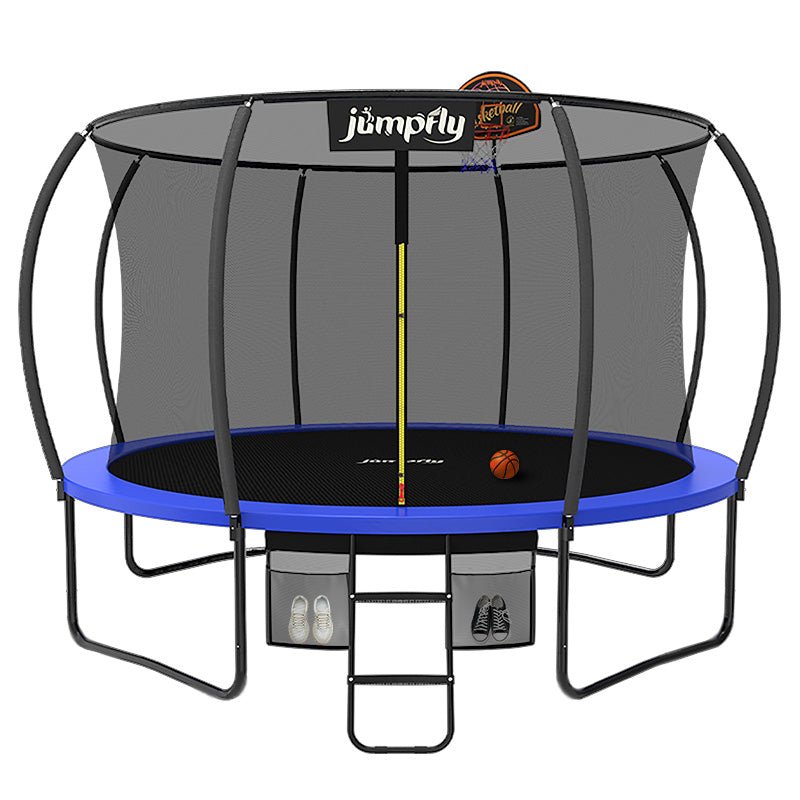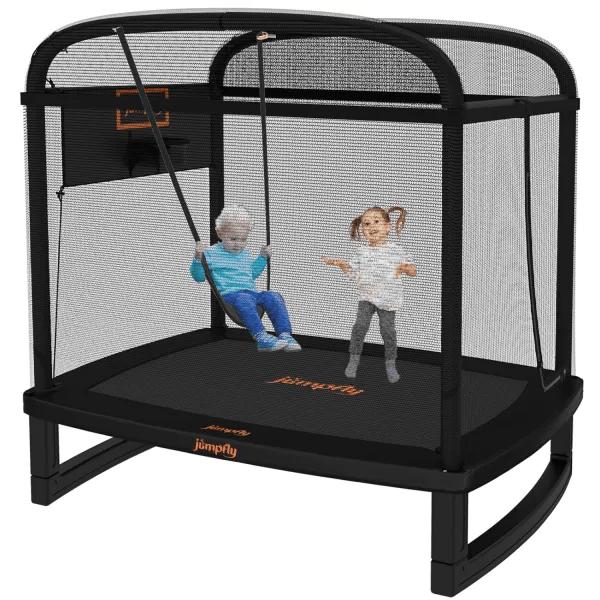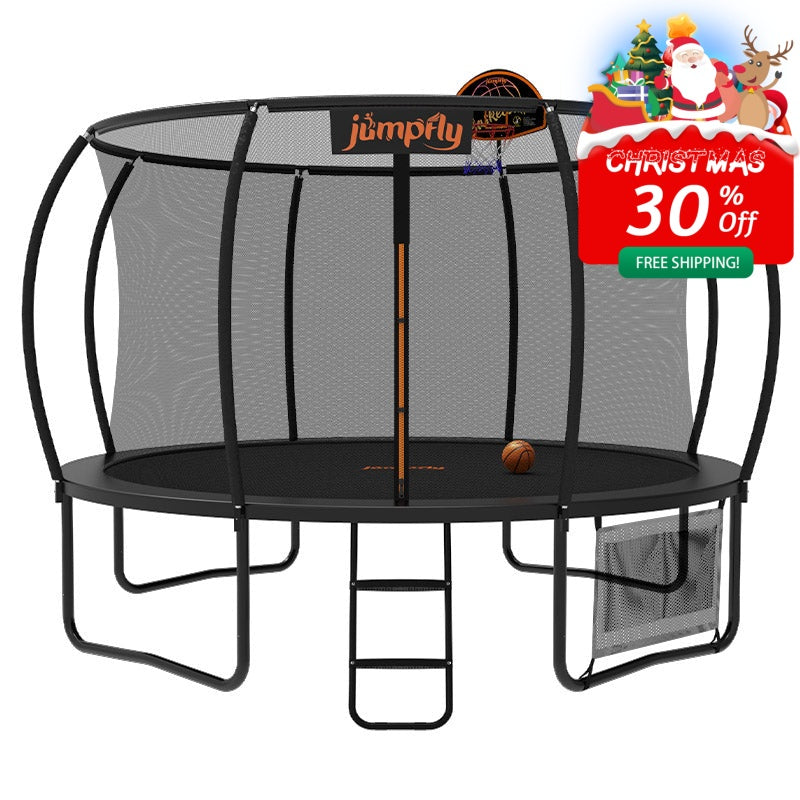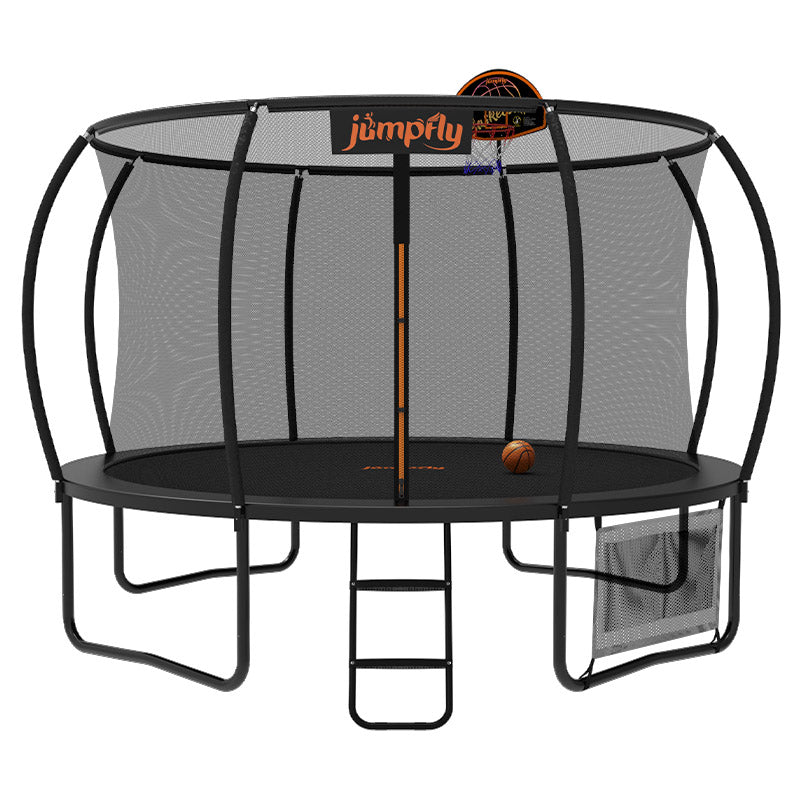Installing a trampoline jumping mat and springs requires careful attention to detail to ensure safety and proper functioning. Here's a comprehensive guide to help you through the process:
1. Assemble the Trampoline Frame:
Begin by assembling the trampoline frame according to the manufacturer's instructions. This typically involves connecting the frame pieces using bolts or screws. Here are some general tips:
- Identify all frame parts and ensure they are correctly oriented.
- Use the appropriate bolts and tighten them securely using the provided tools.
- Double-check the frame alignment to ensure it's square and stable.
For more detailed guidance on frame assembly, check out our blog post: 10 Essential Tips for Safely Assembling Your Trampoline.
2. Attach the Springs to the Trampoline Frame:
With the frame assembled, it's time to attach the springs. Most trampolines have hooks or attachment points around the frame where the springs will connect.
- Spring Types: Trampolines use different types of springs, such as galvanized or stainless steel. Be sure to identify the type of springs your trampoline uses, as this may affect the installation process.
- Hook Types: Familiarize yourself with the hook design on your trampoline frame. Different hook types may require specific attachment methods.
- Even Distribution: Start at one point on the frame and work your way around, attaching the springs evenly to distribute tension and prevent uneven jumping.

3. Attach the Springs to the Jumping Mat:
Now it's time to attach the jumping mat to the springs. This is where a spring pulling tool comes in handy! This tool helps you hook the springs to the mat safely and efficiently. Here's how:
- Lay out the mat: Spread the jumping mat out flat in the center of the trampoline frame. Make sure the label is facing upwards.
- Start with an X: Begin by attaching one spring to a hook on the frame and the corresponding loop on the mat. Then, attach a spring directly opposite to create your first "X." This helps distribute the tension evenly.
- Continue the pattern: Working in an X-pattern, continue attaching springs to the frame and mat, moving around the trampoline.
- Use the spring tool: Use the spring pulling tool to hook each spring onto the mat. This reduces strain on your hands and fingers.
- Ensure even tension: As you go, make sure the tension is distributed evenly around the mat. You should not have any loose or overly tight springs.



Safety First!
- Wear gloves to protect your hands.
- Be careful not to pinch your fingers between the springs and the frame.
- If a spring hook isn't going in easily, gently tap it with a rubber mallet.
For a more detailed guide on attaching trampoline springs, check out our blog post: How to Correctly Assemble Trampoline Springs.
Tools and Materials
Before you begin, gather the following tools and materials:
- Spring pulling tool
- Rubber mallet
- Work gloves
- Manufacturer's instructions
Troubleshooting
Here are a few common issues you might encounter during installation and how to address them:
- Uneven tension: If the mat feels uneven, double-check that the springs are attached correctly and evenly spaced. You may need to adjust some springs to achieve proper tension.
- Missing springs: Carefully count the springs to ensure you have the correct number. If any are missing, contact the manufacturer for replacements.
- Damaged mat: Inspect the mat for any tears or damage before installation. If you find any damage, contact the manufacturer for a replacement.
Safety Precautions
Safety is paramount when installing trampoline components. Follow these precautions:
- Enlist a helper: Having someone assist you with the installation can make the process easier and safer.
- Wear appropriate clothing: Avoid loose clothing or jewelry that could get caught in the springs.
- Keep children and pets away: Ensure the installation area is clear of children and pets to prevent accidents.
Maintenance
Regular inspection and maintenance of your trampoline's mat and springs are crucial for safety and longevity. Check for signs of wear and tear, such as rust, fraying, or damage. Replace any worn or damaged parts promptly. For more information on when to replace your trampoline, see our blog post: 6 Signs You Need to Replace Your Trampoline.
By following these steps carefully and adhering to safety guidelines, you can effectively install a trampoline jumping mat and springs for safe and enjoyable use. If you're unsure about any aspect of the installation process, refer to the manufacturer's instructions or seek assistance from a professional.







Leave a comment
All comments are moderated before being published.
This site is protected by hCaptcha and the hCaptcha Privacy Policy and Terms of Service apply.